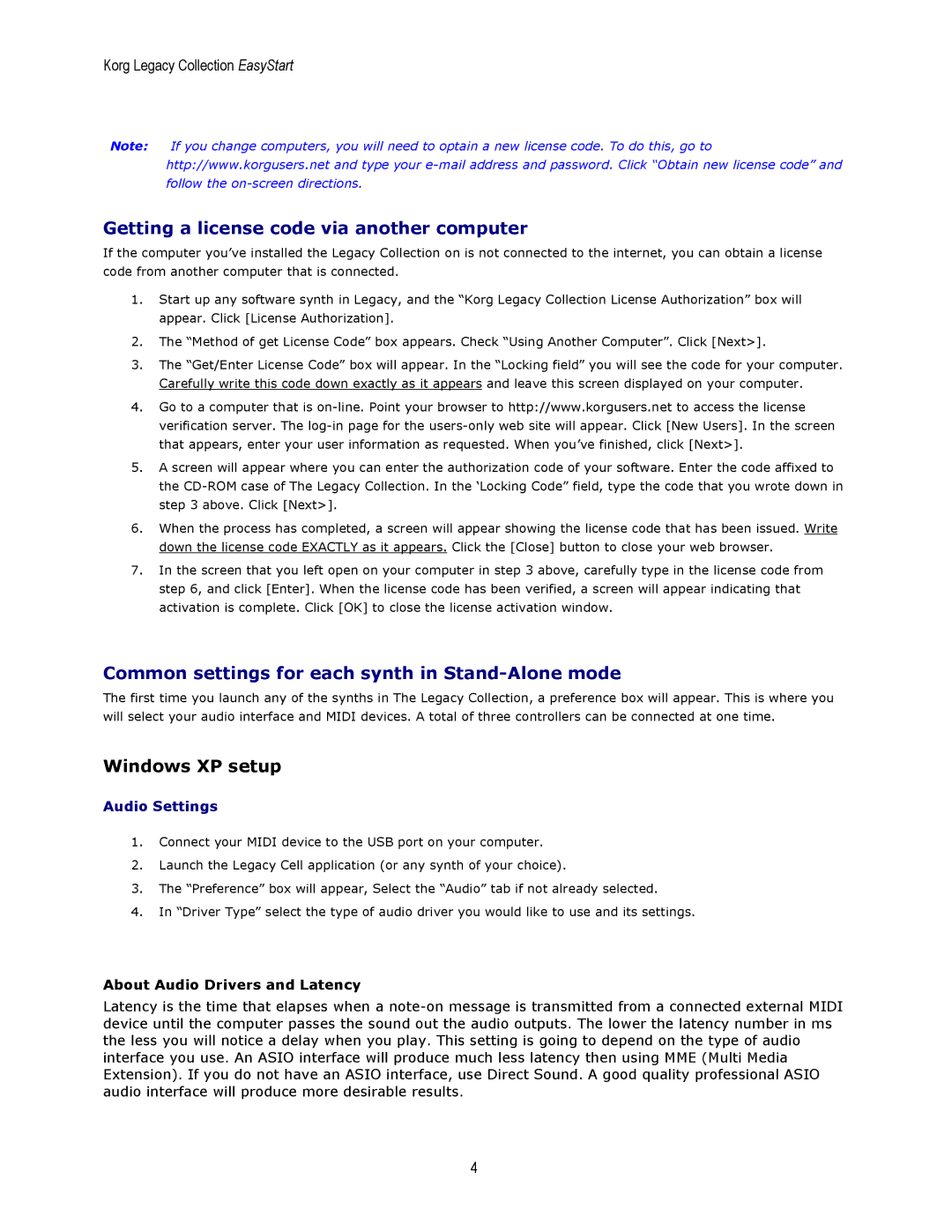MS-20 specifications
The Korg MS-20 is a legendary analog synthesizer that has left an indelible mark on the music industry since its release in 1978. Renowned for its distinctive sound and versatile functionality, the MS-20 combines a powerful set of features with an innovative design that has made it a favorite among musicians, producers, and sound designers.One of the hallmark characteristics of the MS-20 is its semi-modular architecture. This means that while it can be used as a traditional synthesizer, it also allows users to create custom signal paths through patch points. The ability to reroute audio and control signals provides an unparalleled level of flexibility, enabling users to experiment with sound design in unique ways. A range of patch cables can connect various modules, allowing for intricate modulation and routing opportunities.
The synthesizer features two voltage-controlled oscillators (VCOs) that generate a range of waveforms, including sawtooth, triangle, and square waves. This variety allows for rich, complex timbres and the ability to create everything from smooth pads to abrasive leads. The oscillators also feature a generous frequency range, making them capable of producing deep bass tones and shimmering highs.
Another key feature of the MS-20 is its low-frequency oscillator (LFO), which can be used to modulate pitch, filter cutoff, and amplitude. The LFO offers several waveform shapes, including sine, square, and triangle, enabling a range of modulation effects such as vibrato and tremolo. The synthesizer also houses a resonant 2-pole low-pass filter and a high-pass filter. The filter’s character is distinct, with its ability to induce aggressive resonance, making it particularly effective for sweeping and evolving sounds.
The MS-20’s built-in patch bay adds even more depth to its capabilities. With multiple input and output jacks, users can integrate external effects, control voltage from other devices, and further manipulate sounds. This connectivity expands the synth's potential, making it a great tool for live performances as well as studio recordings.
Moreover, Korg commemorated the MS-20’s iconic status with the release of the MS-20 Mini in 2013, which captured the essence of the original while making it more accessible. This modern version retained the core features while offering a more compact form factor and improved reliability.
In a nutshell, the Korg MS-20 is not just an instrument; it’s a creative force that has influenced countless genres, from electronic and ambient to rock and pop. Its rich synthesis capabilities, innovative routing options, and robust sound design functionalities make it a timeless classic that continues to inspire musicians around the globe.
